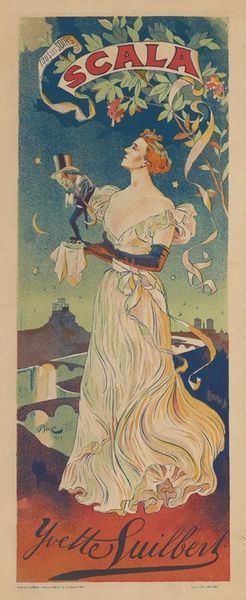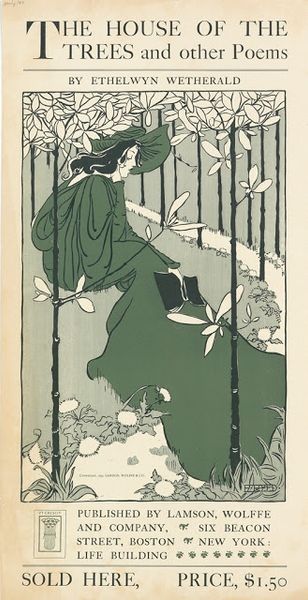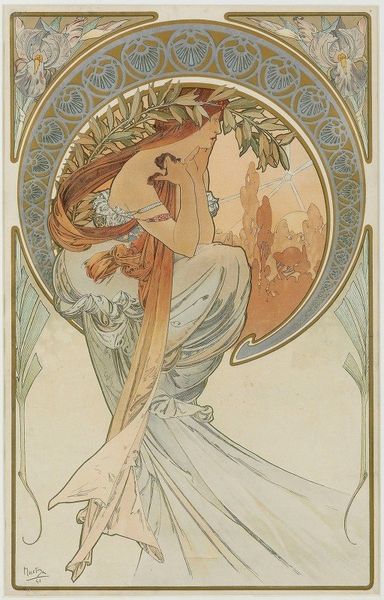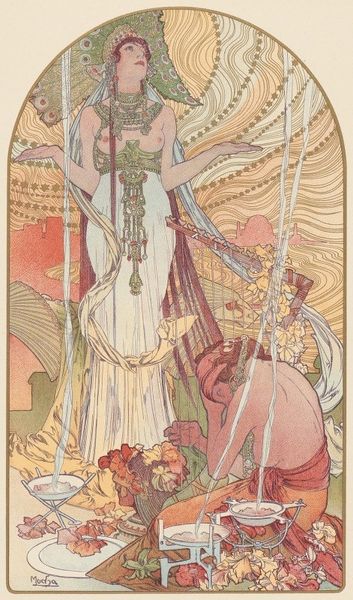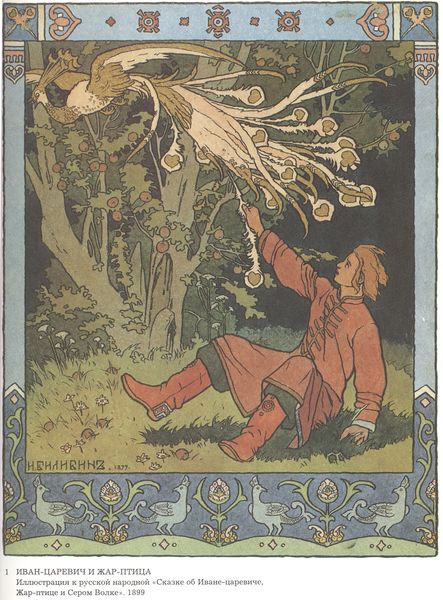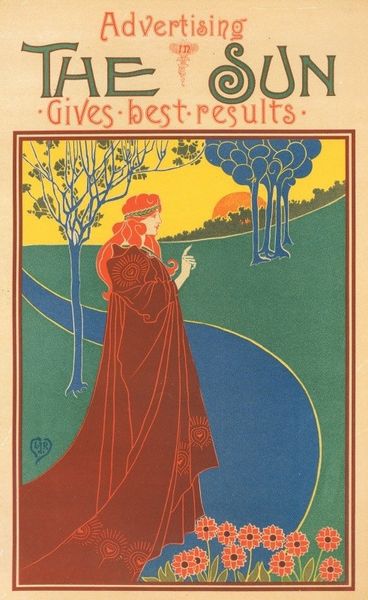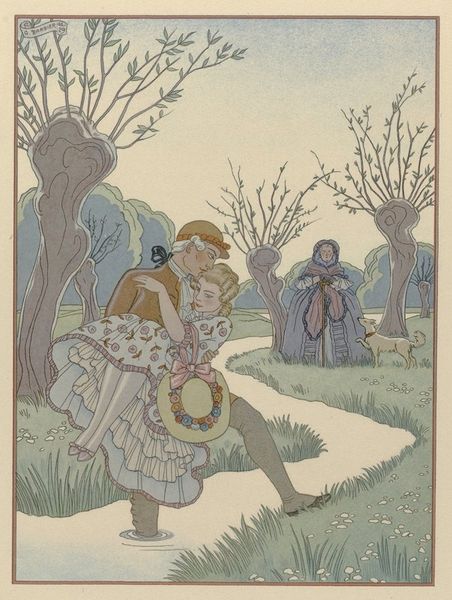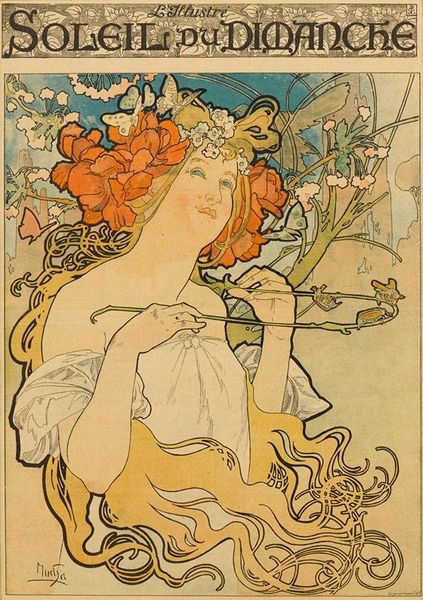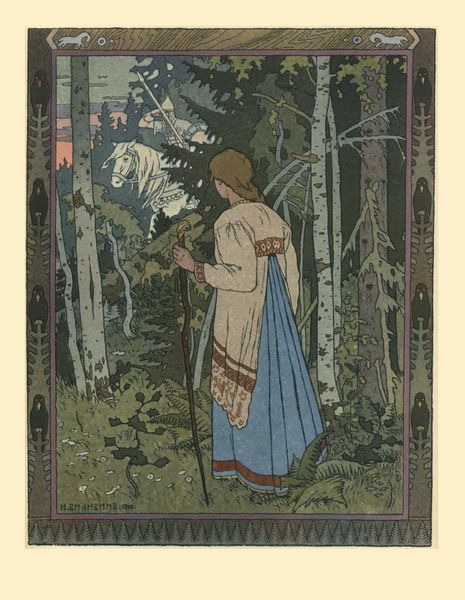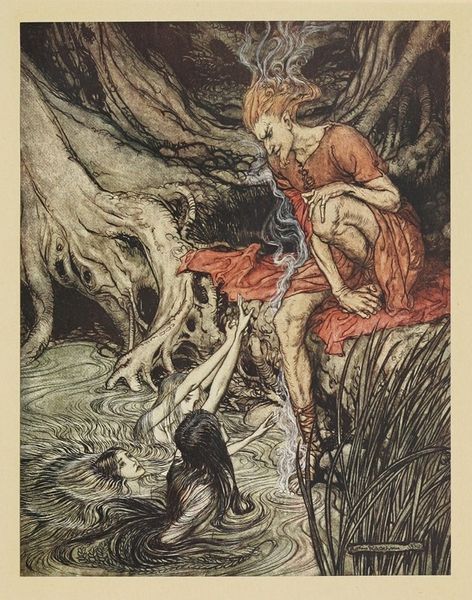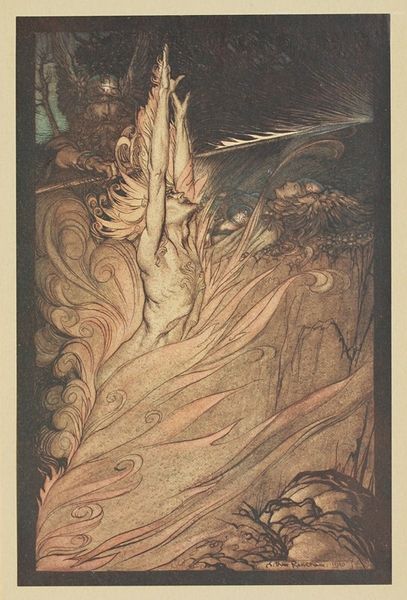
Copyright: Public Domain: Artvee
Editor: Here we have Eugène Grasset’s “Dans Les Bois,” from around 1899, rendered in watercolor. The colors are so gentle, almost like a dream. What strikes you when you look at this? Curator: The most immediate symbolic language is, of course, the figure herself. She seems to embody a classical ideal, perhaps a dryad or wood nymph, signified by the wreath and flowing garment, posed almost protectively against the birch. But look closer – does her stance betray a vulnerability? Editor: I see what you mean. She does seem a bit melancholic. What does the forest itself represent? Curator: Ah, that's where the enduring power of landscape imagery comes into play. Forests are, historically and psychologically, places of both refuge and danger. Consider fairy tales or myths – forests are transformative spaces. What does this particular rendering, with its almost naïve style, suggest to you about its purpose? Is it decorative, or evocative? Editor: Maybe it’s both? The decorative elements feel very Art Nouveau, but the wistful mood gives it a deeper emotional layer. Curator: Precisely. It operates on multiple symbolic registers, weaving together personal sentiment with archetypal forest imagery, reflecting a complex relationship between humans and nature at the time. Grasset’s symbolist interests, coupled with this simplified, illustrative style, provide a pathway into late 19th century anxieties and aspirations. Editor: That's a perspective I hadn't considered – really fascinating. I’ll definitely look at landscapes differently now. Curator: That is the beauty of art, isn’t it? Opening up new ways of seeing.
Comments
No comments
Be the first to comment and join the conversation on the ultimate creative platform.

